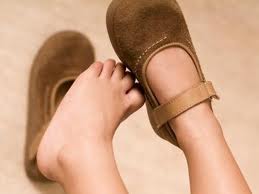Connect With Us
Pediatric Flatfoot
Flatfoot in children is referred to as “Pediatric Flatfoot.” There are several types of flatfoot, but they all look very similar and they all have a common denominator—collapse of the arch.
Some signs and symptoms of Pediatric Flatfoot:
- Pain, tenderness, or cramping in the foot, leg, or knee
- Generalized leg and foot fatigue
- Muscle cramps in the foot and calf
- Outward tilting of the heel
- Awkwardness or changes in walking (gait)
- Difficulty with fitting in shoes or abnormal shoe wear
- Reduced energy when participating in physical activities
- Voluntary withdrawal from sports/athletics/physical activities
Types of Pediatric Flatfoot
1. Symptomatic versus Asymptomatic
Symptomatic simply means “with symptoms” or pain and asymptomatic means “without symptoms” or without pain. Both types are typically treated conservatively with Custom Orthotics, at least initially. Orthotics help hold the foot in an optimal position to help prevent the progression of the deformity. If a patient is still having pain while wearing Orthotics, surgical correction may be necessary.
2. Flexible versus Rigid
A flexible flatfoot is one that has a normal appearing arch when non-weight bearing, but once the patient stands, the arch collapses. A rigid flatfoot has a stiff, flattened arch when both weight bearing and non-weight bearing. Flexible and Rigid Flatfeet may be either symptomatic or asymptomatic. Rigid Flatfeet typically are caused by an underlying condition (i.e. Tarsal Coalition) and may require special consideration.
3. There are other types of Pediatric Flatfoot, such as those caused by injury or disease.
How is Pediatric Flatfoot Diagnosed?
In diagnosing flatfoot, the foot and ankle surgeon examines the foot and observes how it looks when the child sits and stands. The surgeon also observes how the child walks and evaluates the range of motion of the foot. X-rays are often taken to determine the severity of the deformity. Sometimes an MRI or CT scan and blood work may be ordered.
 Treatment for Pediatric Flatfeet
Treatment for Pediatric Flatfeet
Depending on the type of Flatfoot, treatment may be either non-surgical or surgical.
Some Examples of Non-Surgical Treatment
- Activity Modifications: The patient may need to temporarily stop painful activities.
- Orthotic Devices: Patients with painless flatfeet are typically placed in a Custom Orthotic device and the condition will be observed and re-evaluated by the foot and ankle surgeon.
- Physical Therapy: Stretching exercises, icing, formal Physical Therapy by a Physical Therapist, supportive taping and bracing may be necessary as well.
- Medications: Nonsteroidal anti-inflammatory drugs (NSAIDs) may be recommended to help reduce pain and inflammation. NOTE: Please consult your physician before taking any medications.
- Shoe Modifications: The foot and ankle surgeon will advise you on footwear characteristics that are important for the child with a flatfoot condition.
Surgical Treatment:
In some cases, surgery is necessary to relieve the symptoms and improve foot function. Foot and ankle surgeons provide a variety of techniques to treat the different types of pediatric flatfoot. The surgical procedure or combination of procedures selected for your child will depend on his or her particular type of Flatfoot.
